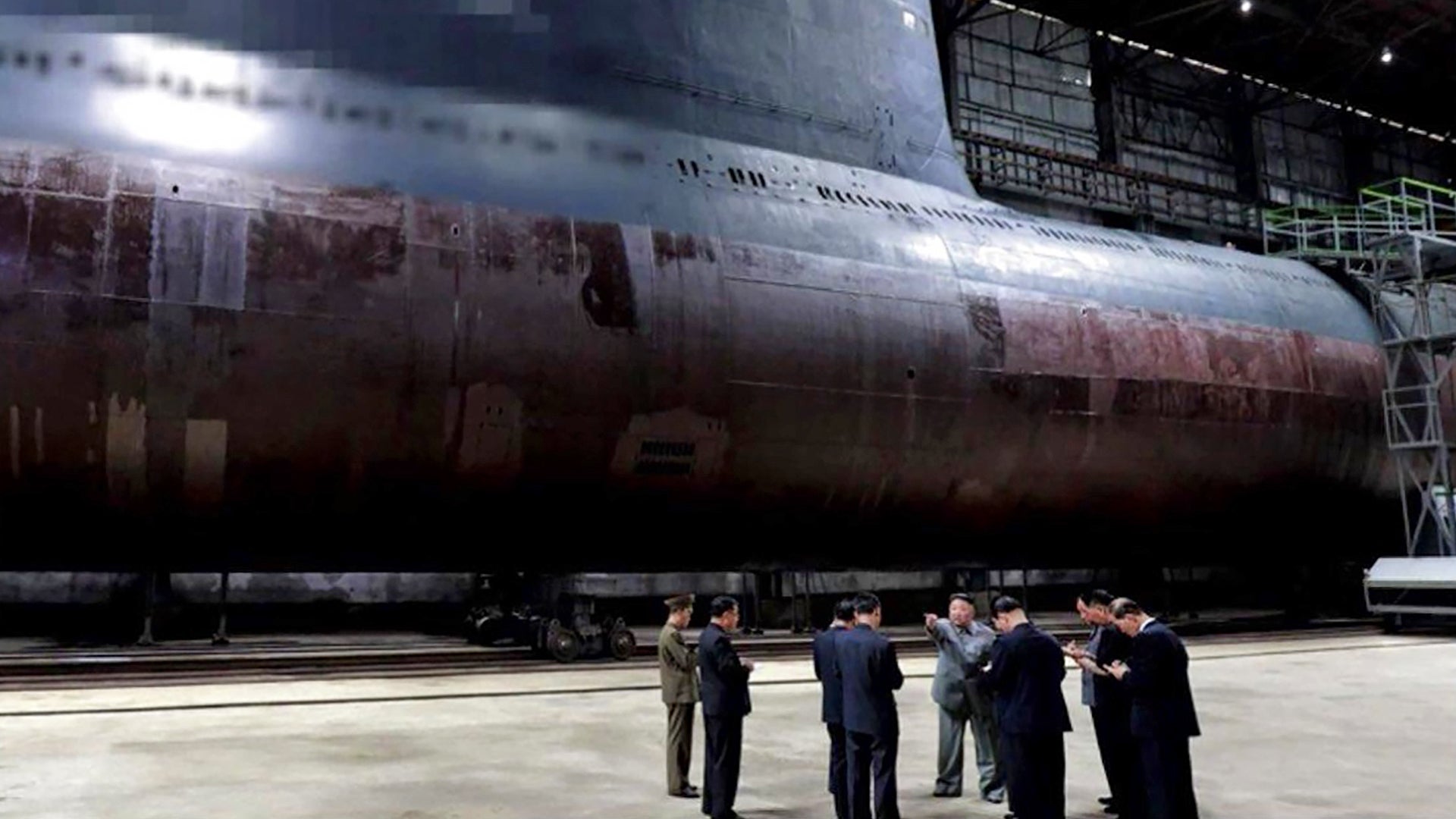North Korea has offered the first glimpse of its “new” diesel-electric ballistic missile submarine, or SSB. However, rather than a successor to the country’s first SSB, the lone example of the Gorae class, official state media showed premier Kim Jong Un inspecting what appears to be a significantly modified 1950s-era Romeo class attack sub.
North Korean state media first began to publish pictures from Kim’s visit to the Sinpo Shipyard, the country’s hub for submarine production. Government censors blurred out the rear portion of the sail of the boat in question in one image, strongly suggesting that this is where one or more tubes for submarine-launched ballistic missiles (SLBMs) are located. North Korea has already developed a solid-fuel SLBM that could potentially carry a nuclear warhead, known within the country as the Pukkuksong-1 and to the U.S. Intelligence Community as the KN-11. The country has also demonstrated a land-based derivative, the Pukkuksong-2 or KN-15, and is reportedly in the process of developing a new SLBM, known as the Pukkuksong-3.
“The submarine [was] built under the meticulous guidance and special attention of Supreme Leader of the Party, state, and armed forces Kim Jong Un [and] will perform its duty in the operational waters of the East Sea of Korea [Sea of Japan] and its operational deployment is near at hand,” a item from the state-run Korean Central News Agency (KCNA) read. “He [Kim] stressed the need to steadily and reliably increase the national defense capability by directing big efforts to the development of the naval weapons and equipment such as [the] submarine. … he elaborated on the immediate duty of and strategic tasks facing the field of national defense science and submarine industry to carry out the plan.”
The use of the word “strategic” make very clear that the North Koreans envision a nuclear mission for this submarine and other future SSBs. This would make sense given the parallel development of the nuclear-capable Pukkuksong series of missiles. Pukkuksong-1 has an estimated range of around 745 miles, while Pukkuksong-2 may be able to strike targets at least 1,240 miles away, putting all of South Korea and Japan well within range of a submarine armed with either of those weapons, even from areas very close to North Korea’s territorial waters.
The submarine Kim inspected appears to be a heavily modified Romeo class design with a substantially larger sail. Not only is the sail it longer, but it is also significantly wider.

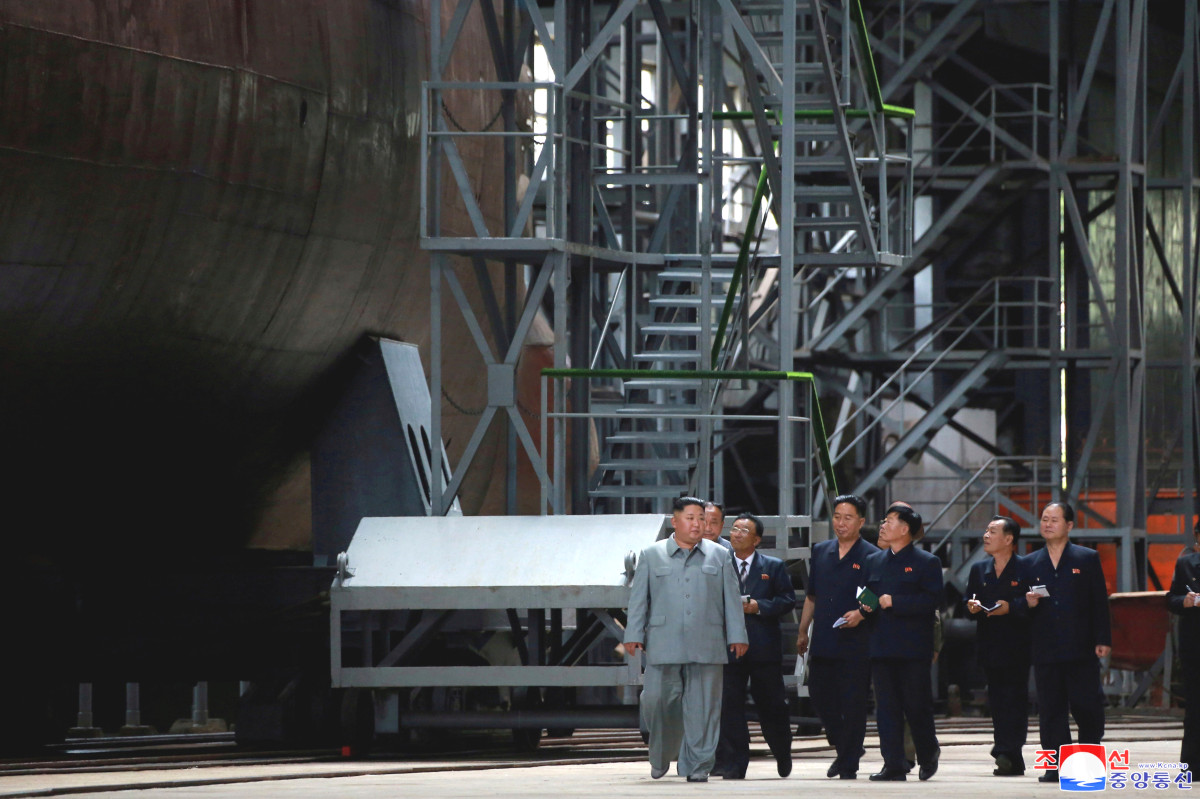

The Soviet Union first introduced the Romeo class attack submarine, an evolution of immediate post-World War II designs based on late-war Nazi U-boats, in the 1950s. It subsequently shared the design with Communist China, who began producing local variants known as the Type 033. In the 1970s, the North Korean subsequently received a number of Chinese-built Type 033s, as well as kits to construct their own examples.
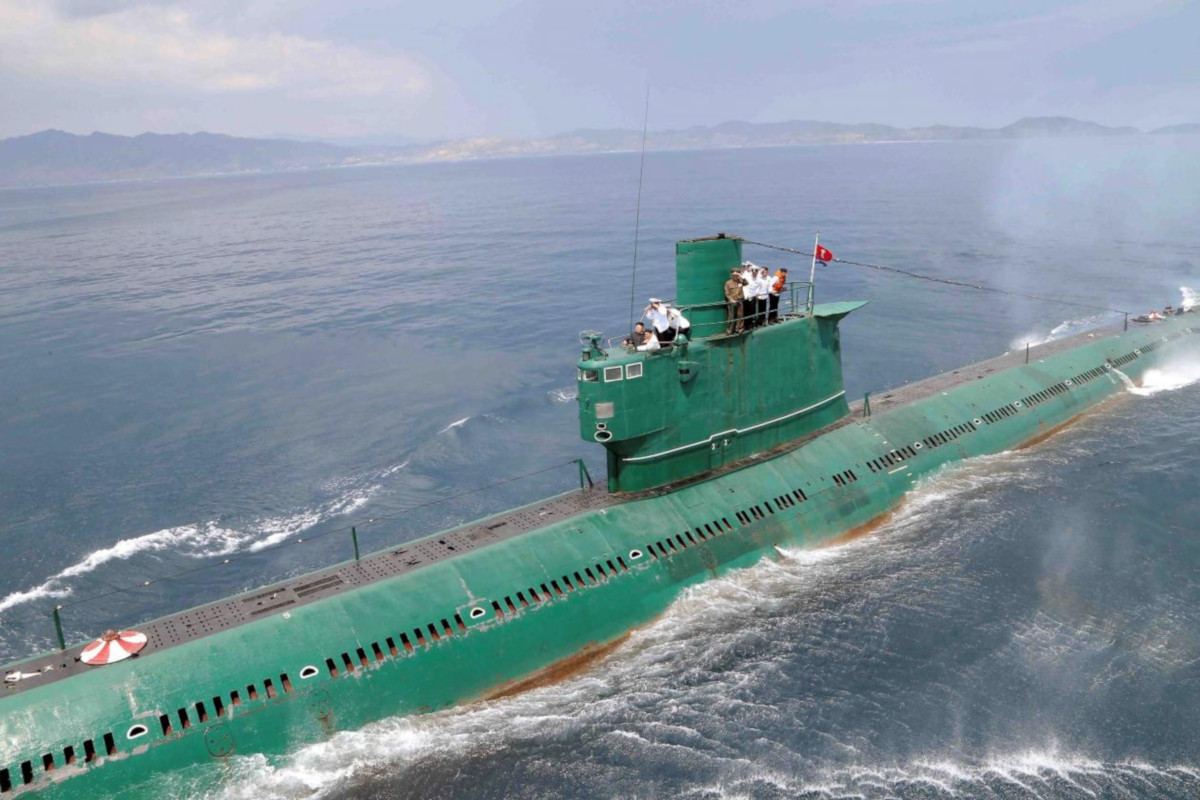
At its peak, North Korea’s Romeo fleet had around 20 boats in total, though it is unclear how many of these remain serviceable now. It is not clear whether this new-ish SSB is a conversion of one of the remaining active Romeos or if Sinpo rehabilitated a previously inactive hull and then modified it for its new mission.
The new sail with SLBM launch tubes, rather than placing those tubes in the main hull, also harkens back to early Soviet SSB and nuclear-powered SSBN designs, such as the Golf class and Hotel class. Otherwise, it seems to retain many of the Romeo‘s other design features, including the twin-screw propulsion arrangement and angular forward hull.
This is all somewhat curious given the existence of the more modern Gorae class design, also known within the U.S. Intelligence Community as the Sinpo-B, which has a general hullform that appears to taken design cues from the North Korea’s smaller midget submarines, such as the Sang-O class and Yono class. The lone Gorae
successfully demonstrated its ability to launch a Pukkuksong-1 missile in 2016 after a number of earlier tests.
That same year, satellite imagery of the Sinpo Shipyard showed what appeared to be an entirely new submarine under construction, which subsequently became known as the Sinpo-C. Reports later indicated that this boat would be a successor to the Gorae and might have a submerged displacement of around 2,000 tons and a beam of between 23 and 36 feet. Gorae, which experts believe has just one launch tube in its sail, has an estimated submerged displacement of 1,650 tons and a beam of just a little over 21 feet.
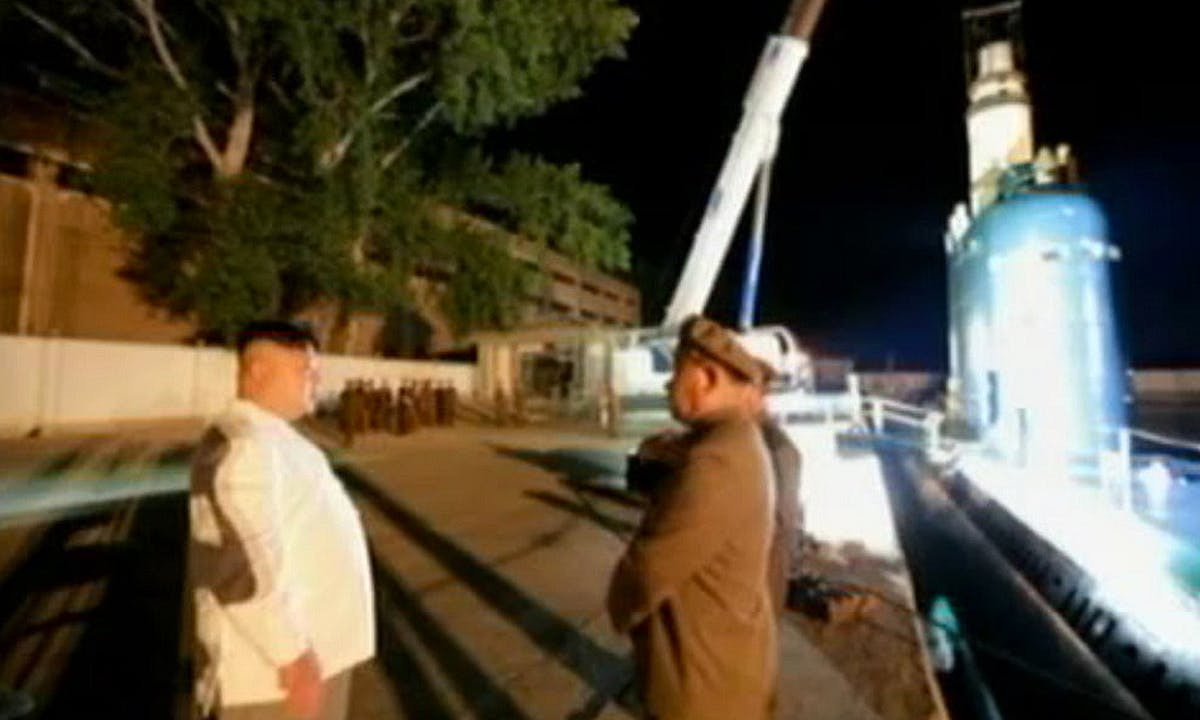
The basic Romeo class design is slightly smaller than the projections for the Sinpo-C and also has a completely different hullfrom from the Gorae. This raises the question of whether or not the submarine Kim recently inspected is actually the Sinpo-C or if North Korea is still working separately on an entirely new design, which would be a relatively complex and costly endeavor.
Converting older Romeos to SSBs could offer a potentially lower-cost and lower-risk avenue for Pyongyang to expand its ballistic missile submarine capabilities. It would also likely be easier for North Korea, which is under heavy international sanctions, to source parts for these older submarines. Those same sanctions may have limited North Korean shipbuilders’ ability to acquire more modern technological components and other materials necessary for new submarine designs, though the country does have extensive sanctions-busting networks in place.
Still, while the thoroughly dated base design will significantly hamper the ability of these SSBs to remain undetected, it would still offer additional ways for North Korea to distribute its nuclear arsenal and provide a limited second-strike capability. Even a relatively loud diesel-electric submarine would require potential opponents, such as South Korea and the United States, to devote significant anti-submarine resources to constantly track its position and monitor its status, too.
This Romeo SSB could also offer a way around North Korea’s self-imposed moratorium on the test of long-range ballistic missiles and nuclear weapons, as the regime in Pyongyang does not understand this to cover SLBMs. Depending on how close the submarine actually is to getting launched and putting to sea, even for tests, the boat could be a useful tool for pressuring the United States and South Korea in the course of future negotiations over sanctions and other issues.
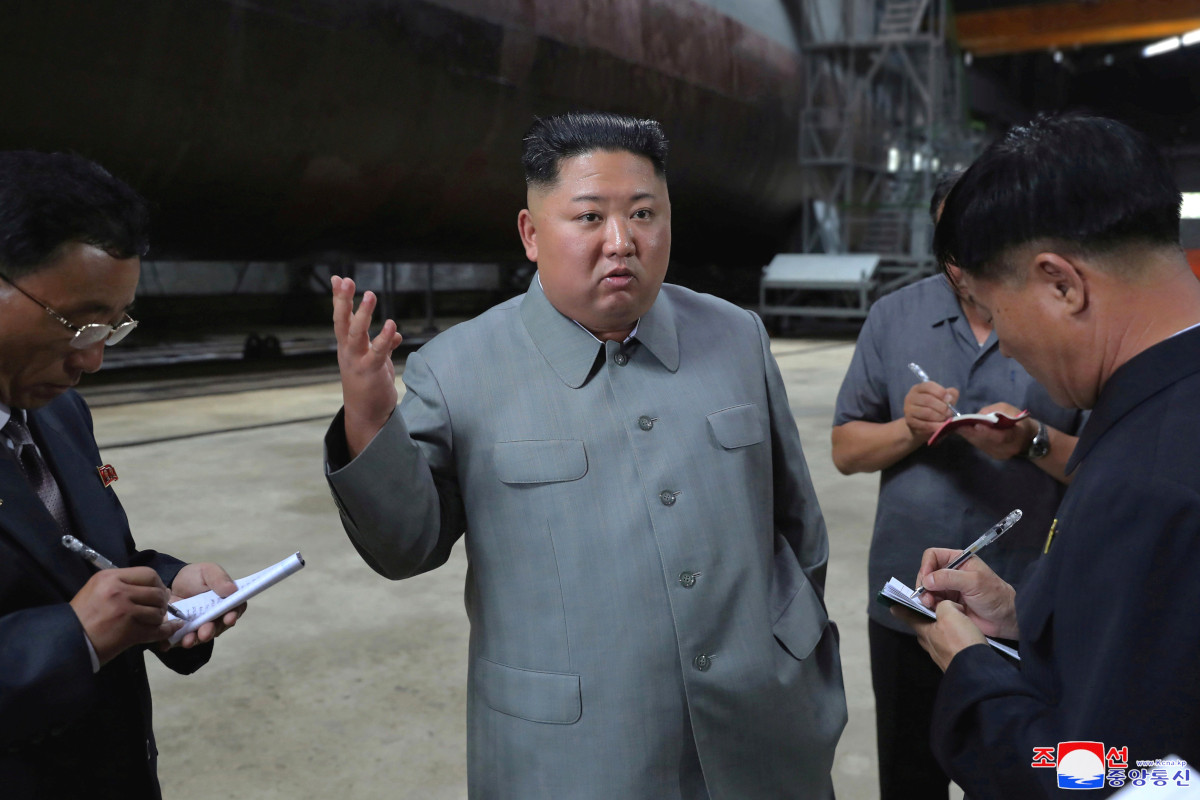
In May 2019, North Korea conducted multiple tests of a new short-range ballistic missile using two different kinds of transporter-erector-launchers, another move that did not technically violate the country’s stated moratorium, but was still clearly aimed at sending a message to its opponents. The North Koreans are almost certainly planning some sort of response to upcoming U.S.-South Korean military exercises, which the regime in Pyongyang says violates the spirit of declarations it has signed with Seoul and Washington in 2018.
The emergence of the submarine may also be an expression of North Korea’s frustration with the lack of further substantive negotiations with the United States, which were supposed to get something of a jumpstart following Trump’s historic visit to the country last June. Despite this, the two nations continue to be something of a diplomatic deadlock. The country’s foreign ministry has already publicly speculated that it might terminate the self-imposed testing moratorium in response to this lack of subsequent progress. The demonstration of a “new” SLBM capability would certainly be a very visible statement in this regard.
Regardless, the appearance of the Romeo SSB makes it clear that North Korea continues to make significant investments in SLBM capabilities, in general, as well as in submarine and solid-fuel rocket technology to support those developments. North Korea’s submarine programs have long had significant implications for the security situation in the region, and beyond, and the appearance of this new boat only reinforces that this is an area that deserves close attention.
UPDATE: 7:30pm EST—
CNN has reported, citing an anonymous U.S. official, that the United States has been aware of the submarine in question for over a year. However, this does not necessarily rule out that North Korea is still working on a separate, new-build ballistic missile submarine in addition to the modified Romeo.
Contact the author: joe@thedrive.com
